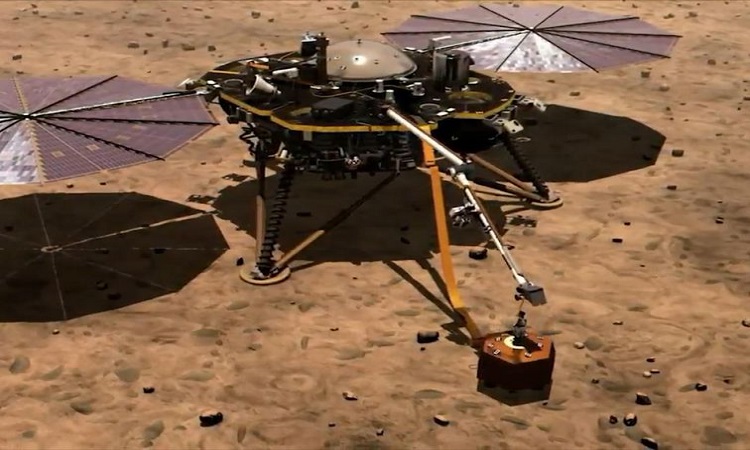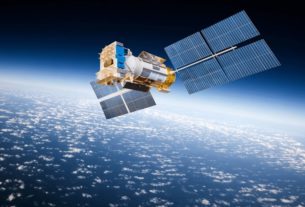The first official results of the Insight mission, published by NASA, confirm that Mars is seismically active. But it’s a different seismicity from Earth.
After just over 480 million kilometers traveled, the American probe Insight successfully landed on Monday, November 26, 2018 on the surface of Mars. The real heart of this mission was to be able to detect the tiny seismic waves crossing the lower layers of the planet. By studying these “tremors”, researchers could then learn more about the internal composition of Mars and its initial formation.
Over 300 seismic events detected
A few days ago, NASA shared various reports detailing the data collected by the probe in the Elysium Planitia crater during the first 10 months of its mission. These results, even if we already knew it informally, confirm that the red planet is seismically active. A question which, for many years, had been widely debated among planetary scientists.
Since the start of the mission, we have learned more precisely that the SEIS seismometer, installed on Insight, has detected more than 450 of these seismic events (174 in the first 10 months). Among them, a dozen were of magnitude 3 to 4. It was also confirmed that none of the vibrations recorded were caused by meteorites hitting the planet or by landslides. So there is really a lot going on beneath the surface of Mars.
“The seismic activity is higher than that of the Moon – which was measured during the Apollo program – but lower than that of the Earth,” summarizes Bruce Banerdt, principal investigator of the InSight mission. In fact, we probably get closer to the types of seismic activity recorded on Earth when we move away from the boundaries of tectonic plates. “
Most of these “Martian tremors” occurred at a depth of between 28 and 48 kilometers, we also learn, which is much deeper than those recorded on our planet.
Search the interior of the planet
Thanks to these results, which the researcher deemed “very promising”, we will soon be able to examine how these tremors move through the lower layers of the red planet. What to probe its internal composition, and the way it was formed.
On Earth, all this information has disappeared because of plate tectonics, which involves a permanent movement of the land masses. But Mars is not subject to these plate movements. In other words, traces of its formation are still present. Hence the importance of being able to study these seismic movements.
It should also be stressed that the origin of these Martian tremors has nothing to do with that of the earthquakes. Because, as we just said, there is no plate tectonics on the red planet.
At the moment, the cause of these “marsquakes” is not yet clearly established, but the researchers suggest that the slow cooling of the planet, by contracting the outermost layers, could play an important role.
Some areas also seem more stressed than others. This is particularly the case in the Cerberus Fossae region, a series of semi-parallel cracks found approximately 1,600 kilometers east of the InSight landing site.
After analysis, it emerged that this area was still experiencing significant volcanic activity between 2 and 10 million years ago. In other words, just recently. For the researcher, it is therefore possible that the cooling of the planet leads to the contraction of the magma chamber located deep, causing a deformation of the crust on the surface.

Email: mary@satprwire.com Phone: +44 20 4732 1986
Marry is a fitness freak in every manner and gives proper care about her health and of others. She is probably the best person we have at Daily Research News for covering articles from the Health sector. If not at work, she can be seen drinking a cup of coffee.



